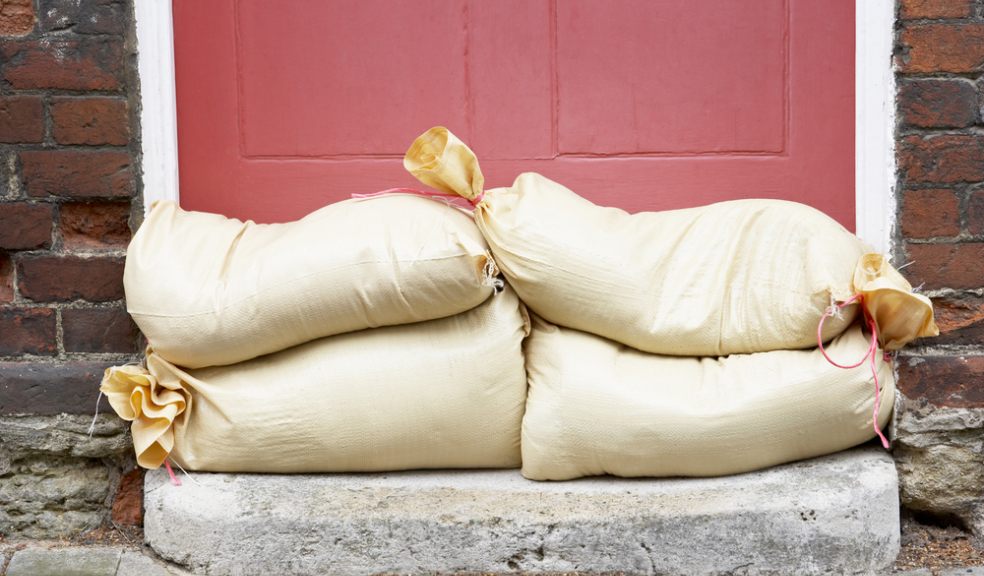
How to prepare your property for flooding
Over 5.5 million properties in England and Wales are at risk of flooding from rivers, the sea or surface water. That’s one in six, which means there’s a high chance one of these properties is your home or business. Here the Environment Agency offers some advice on how to reduce the damage to your property by a little planning.
It pays to prepare for flooding
If your home or business is flooded it can be costly, not just in terms of money and time but also inconvenience and heartache.
While it’s impossible to completely flood-proof a property, there are lots of things you can do to reduce the damage flooding can cause.
The key is to act now so you’re prepared if there’s a flood in your area.
Am I at risk of flooding?
You need to find out. It could save you money, help you protect yourself and your property – maybe even save your life.
Even if your home or business is not directly at risk of flooding from rivers or the sea, you could still be affected by surface or groundwater flooding.
Visit our website www.environment- agency.gov.uk or call Floodline on 0845 988 1188 to see if your property or business is at risk and for other useful flood information.
Now you know the risk, here's what you can do...
Protect your property and possessions
Whether you rent or own your home or business premises, there are many things you can do to help yourself. Some are simple and temporary while others involve permanent structural work.
You can also make improvements so that even if flood water enters your property it causes less damage, so drying-out and cleaning up is faster and easier. This means you could move back home or open for business far more quickly.
The most important thing is to prepare now by buying and installing flood products in advance.
Don’t wait until flooding looks likely as you won’t have time to buy or put the measures in place.
Try to keep flood water out
• Doors: buy purpose-built flood boards that can be installed when flooding is imminent. You can also raise door thresholds.
• Walls and floors: raise damp-proof brick courses. Sealing floors (‘tanking’) can prevent water rising through the ground.
• Air bricks: buy specially designed covers that are easy to place over ventilation bricks.
• Drains and pipes: fit non-return valves to drains and water inlet and outlet pipes.
... but accept that flood water might get in
In the case of bigger floods this actually needs to happen otherwise the weight of the water outside might cause the building to collapse. Here are some things you can do to reduce the damage floodwater might cause inside:
•Shelving: put irreplaceable or valuable items on high-mounted shelves.
• Home entertainment: fix your audio-visual equipment, for example your TV and hi-fi, to the wall about 1.5 metres above floor level.
• Skirting: fit water-resistant skirting boards, or varnish them.
• Pump: fit a pump in a basement or under-floor void to extract flood water.
• Walls: dry-line. Use horizontal plasterboard, or lime-based plaster instead of gypsum. Get a special draining system for cavity walls.
• Flooring: lay tiles with rugs rather than fitted carpets, which often need to be replaced after a flood.
• Doors and windows: install synthetic or waxed windows and doors, or varnish.
• Kitchen and bathroom: use water- resistant materials such as stainless steel, plastic or solid wood rather than chipboard. Where possible raise fridges and appliances on plinths.
• Electricals: raise electrical sockets, fuse boxes, controls and wiring to at least 1.5 metres above floor level. If rewiring, bring cables down the wall to the raised socket so that cabling isn’t affected.
How much will it cost?
Making your property resilient to floodwater will limit the distress and damage caused by flooding, which means less costly repairs and less time out of your home or business premises.
The cost of purchasing and installing products to keep floodwater out of your property will depend on the size of your property and the type of flood you want to protect against.
For example, according to the ABI, to protect your property against shallow flash floods could cost between £2,000 - £6,000.
To keep water out during periods of prolonged flooding will take bigger changes and could cost between £20,000 -£40,000.
Buying products
There is a variety of products that you can purchase. A comprehensive list of these can be found in ‘The Blue Pages’ directory on the National Flood Forum’s website www.floodforum.org.uk.
The Blue Pages is an independent directory of products, builders, suppliers and insurers. It’s designed to provide information on all aspects of flood protection and resilience products.
Quality check
When you buy a flood product check it’s been properly tested and is up to the job – it should display the BSI Kitemark or equivalent accreditation for the national quality standard PAS 1188.
The British Standards Institution (BSI) maintains a list of all manufacturers of flood protection products that have been tested and achieved Kitemark accreditation. See www.kitemark.com
The Flood Protection Association represents manufacturers and designers of flood defence products. See www.floodprotectionassoc.co.uk
Insurance
Check your buildings and contents insurance policies to see what cover they provide for flood damage.
If you make changes to your property so it’s more resilient to flooding make sure you let your insurance company know as this this might result in a reduction in excess charges or premiums depending on your insurer.
For more information about resilient repair contact the Association of British Insurers www.abi.org.uk.
Sign up for warnings
Knowing when to put temporary flood protection measures in place is crucial. Our free Floodline Warnings Direct service can tell you when to do this by sending you a warning by phone, text and email.
Sign up for Floodline Warnings Direct online at www.environment- agency.gov.uk or call Floodline on 0845 988 1188.
Professional advice
If you’re going to make permanent changes to protect your property against flooding, we strongly recommended that you seek professional advice from a building surveyor, architect or other professional. You could contact:
Royal Institution of Chartered Surveyors (RICS). See www.rics.org
Royal Institute of British Architects (RIBA). See www.architecture.com
Where can I get more information?
If you would like to get a better understanding of flooding, see our web site or call Floodline on 0845 988 1188.
Don’t forget to sign up to our free 24 hour Floodline Warnings Direct service.
We have information offering you practical advice on what to do before, during and after a flood. It's available in PDF, print, CD and MP3 file. You can download them from our website or order them from Floodline.
Contact your local authority to find out if flood protection grants are available for your property.
If you would like to find out more about the Environment Agency, or about your environment then call 08708 506506 (Mon-Fri 8-6).
Approximate costs: 8p plus 6p per minute (standard landline).
Please note, charges will vary across telephone providers.
enquiries@environment-agency.gov.uk
Incident hotline: 0800 807060 (24hrs)
Floodline: 0845 988 1188

















